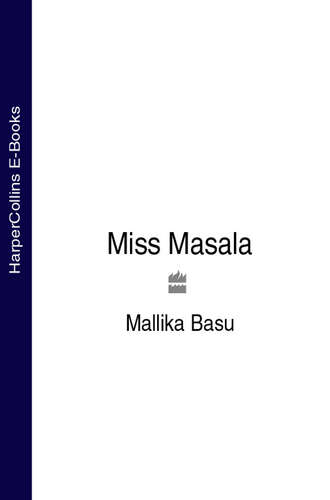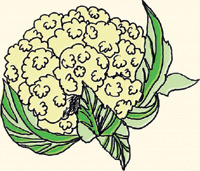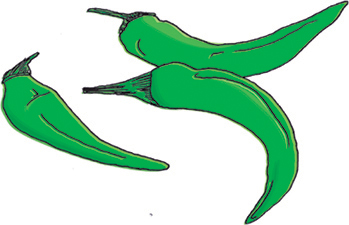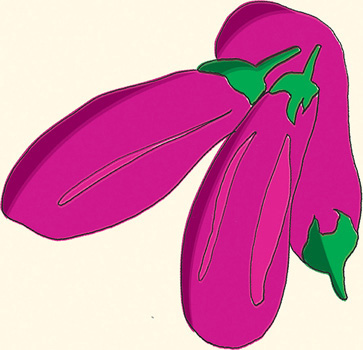
Полная версия
Miss Masala
The sensible thing to do, of course, is to cook oneself something when sober and wide awake. Something requiring minimum effort but with maximum result. A wholesome, healthy dish that uses fridge-ready ingredients and takes no more than half an hour from preparation to plate.
I’m talking protein-rich vegetable dal, a comforting pulao or some bhuna chicken with salad. All cooked in extra quantities to provide sustenance before and after a booze-fuelled evening, or simply frozen for busy days to come and other desperate moments.
I racked my brains for inspiration as I flopped on to the taxi seat.The back of a black cab is usually where I pause to think and take stock. Make calendar notes of birthdays. Return overdue phone calls. Painfully remind myself of the meagre contents of the fridge.
And then the friendly driver interrupted my reverie:
‘Are you Welsh?’
Here we go again …
‘Indian? You speak very good English?’
It might have been the years of the Raj that clinched it.
‘I love curry. Madras is my favourite.’
At which point, I flung away my CrackBerry and launched into an impassioned monologue about real Indian food. While I was at it, I handed out a 10-minute lesson in Indian history and chucked in some quick Indian cooking tips for good measure. The driver humoured me as we turned into my street.
The lecturing got me thinking. Madras and phal may be figments of the Western culinary imagination (refer to rant), but some truly authentic dishes have infiltrated British curry-house fare. And not all of them take hours of preparation and stirring. Just the way I like it.
Chicken Jhalfrezi
Pan-fried chicken with fresh green peppers
Chicken Jhalfrezi is a personal favourite. Literally meaning ‘chilli fried’, a jhalfrezi is an Indian stir-fry. Flummoxed? So was I when I saw the curry-house version – limp green peppers swimming in a watery marinade.
This recipe really is worth dragging the beastly Ken Hom wok from the dark underbelly of my kitchen cabinet. I set it on a high heat. Fry up lean chicken and strips of pepper and onion with the tiniest amount of oil. Rip open a bag of fresh watercress and rocket to serve it on. And say a quiet thanks for chatty cabbies.
Feeds 4
4 skinless chicken thigh fillets
4 tbsp low-fat natural yoghurt
1 tbsp tomato purée
1 tsp turmeric powder
1/2 tsp chilli powder
2 tbsp freshly squeezed lemon juice
2 medium onions
1 large tomato
2 green peppers
1 tbsp oil
1/2 tsp garlic paste
1 tsp ginger paste
1 tsp garam masala
25g (1oz) fresh coriander, roughly chopped
salt
1. Slice the chicken into strips and soak it in the yoghurt, tomato purée, turmeric and chilli, adding the lemon juice for extra zing. While it’s marinating, peel the onions and slice these plus the tomato and green peppers into 1cm (1/2 in) wide slices.
2. Warm the oil in a wok or large frying pan set over a high heat. When it sizzles, fry the onions and garlic and ginger pastes for 2–3 minutes until softened.
3. Now add the chicken, with its marinade, and stir vigorously for 5 minutes until the meat is sealed evenly. Throw in the tomato slices and keep cooking and stirring over a high heat for about 5 minutes.
4. Finally, toss in the green peppers and garam masala. Cover the wok/pan with a tight-fitting lid and cook for a further 2 minutes until the peppers soften and the chicken has absorbed its yoghurt marinade.
5. Stir in the coriander, add salt to taste and serve the chicken piled high on a bed of mixed green salad leaves tossed with fresh lemon juice, salt and chilli powder.
HOMEMADE GINGER AND GARLIC PASTES
OKAY, HERE’S THE TRUTH.
The one thing I keep failing to achieve is jars of fresh, lovingly prepared homemade ginger and garlic paste. I usually purée the amount I need for a recipe just before I get started. One fat clove of garlic and 1cm (1/2in) root ginger gives approximately 2 teaspoons of ginger-garlic paste when puréed with 1 tablespoon of water.
Jars of store-bought garlic and ginger pastes are a permanent fixture in my fridge for those exceptionally lazy days. If you can be slightly more organised than me, by all means make your own. Twelve fat garlic cloves peeled and puréed in a hand blender with 2 tablespoons of water will give you 12 teaspoons of garlic paste. For ginger, 15cm (6in) peeled root ginger puréed with 2 tablespoons of water will give you about 12 teaspoons of the paste. Seal them tight in well-washed and thoroughly dried glass jars (I reuse empty ginger and garlic paste bottles) and use for up to four days, keeping them in the fridge.
TO MARINATE OR NOT TO MARINATE
Leaving meat to sit for hours is not absolutely essential, but the longer you give it, the more flavoursome and tender it becomes. Plan shopping trips, makeup application and household chores to take place after you’ve whipped up the marinade, to make best use of time.
Aloo Gobi
Famous sautéed potato and cauliflower

Aloo Gobi was immortalised in Gurinder Chadha’s Bend It Like Beckham. My mother, unlike her counterpart in the film, would have me turning professional footballer any day over queen of authentic Aloo Gobi. Thankfully, I don’t play football. Which means I am free to hold forth in the back of black cabs, extolling the virtues of this celebrated north Indian dish.
A classic bhuna or stirred dish, Aloo Gobi is cooked in its own juices and best made with the freshest vegetables. Serve it tucked into warm toasted pitta bread.
Feeds 4 Vegetarian
400g (14oz) cauliflower
4 large new potatoes
1 small onion
1cm (1/2in) root ginger
1 garlic clove
2 tbsp oil
1 tsp coriander powder
1 tsp cumin powder
1/4 tsp turmeric powder
1/2 tsp chilli powder
1 tsp garam masala
1 large handful of fresh coriander, roughly chopped
salt
1. First cut the cauliflower into large bite-sized florets. This will prevent them from falling apart once they start cooking. Peel and quarter the potatoes and peel and finely chop the onion, ginger and garlic.
2. Warm the oil in a large frying pan set over a high heat. When it starts to sizzle, add the onions, garlic and ginger and fry for about 5 minutes until they soften and turn translucent. Next, throw in the potatoes and all the spices, apart from the garam masala.
3. Add a tablespoon of water, cover the pan with a lid and partly cook the potatoes for 5–10 minutes. When you can insert a fork into them, but with some difficulty, it’s time to add the cauliflower florets. It’s crucial not to add the cauliflower too early, however – you don’t want it to overcook!
4. Once you’ve added the cauliflower, stir well to incorporate with the other ingredients, cover the pan once again and cook for 3–4 minutes until the florets are soft but still whole.
5. Sprinkle the garam masala all over, add salt to taste and finish with a handful of chopped coriander.
Palak Paneer
Indian cheese in a spiced spinach purée
By far the most popular recipe on my blog, and it’s no surprise why: soft chunks of paneer and spiced spinach purée are a match made in heaven and the last thing I will eat if I ever find myself on the way to hell.
Fresh spinach works just fine in this recipe. But why bother, when freshly frozen spinach is more nutritious and is almost always sitting in a big bag in the freezer. Make loads in one go – you’ll crave this for at least two days afterwards.
Feeds 4 Vegetarian
225g (8oz) paneer
1/2 tsp turmeric powder
1/2 tsp chilli powder
1 medium onion
4 garlic cloves
2.5cm (1in) root ginger
2 tbsp oil
1 large fresh green finger chilli
1 tsp cumin powder
500g (1lb 2oz) frozen spinach
1/2 tsp garam masala
salt
1. Chop the block of paneer into even, bite-sized pieces. In a large bowl, mix the paneer pieces with the turmeric and chilli and a teaspoon of salt, then set aside.
2. Now, peel and roughly chop the onion, then peel and purée the ginger and garlic with a hand blender. Pour the oil into a large non-stick frying pan and set over a high heat. When the oil is hot, add the paneer and fry on one side until golden brown and then flip the pieces over and repeat on the opposite side. Remove the paneer with a slotted spoon and place back in the bowl.
3. In the same frying pan and using the oil left in the pan, fry the onions, ginger and garlic. While these are cooking, roughly chop the chilli. When the onions start going translucent, after about 5 minutes, mix in the cumin and the chilli. Fry for a further 5 minutes until the mixture turns a deep golden brown.
4. Now mix in the frozen spinach and let it cook for 5 minutes. When it is thoroughly defrosted in the pan and evenly mixed with the masala, add half a mug of hot water and go in with a hand blender to liquidise the whole lot into a smooth, creamy mixture. Alternatively, you could whiz the spinach in a food processor for the same result.
5. When the spinach mixture is smooth, pour it back into the pan, then add the fried paneer pieces and the garam masala. Lower the heat and simmer for 10 minutes until all the liquid has evaporated and the spinach has absorbed the spices evenly (taste a little just to check).
6. At this point, add salt to taste. You’ll need to add a fair bit to offset the blandness of the spinach. But this dish is worth it. Eat it piping hot as a side dish or with some ready-made naans for a complete meal.

I ARRIVED HOME FROM WORK FEELING INSPIRED. Ready to roll my sleeves up and set the pots on the fire. But it’s never quite that simple. I first had to change into a retro nightdress (for which, read ‘old, torn’), pour myself a vodka lemonade and fire up the laptop. The urgent pleas of desperate new converts to Indian cooking around the world required an immediate response on my Quick Indian Cooking blog:
Help, I have no raisins! Done.
Do you have a single sister? Ignore.
Would you like to enlarge your penis? Bin.
Before I knew it, it was time for dinner. The options were limited. Since my university days, I’ve avoided greasy takeaways like a double helping of lard. So we could eat one of the three dishes my man had perfected. Or something low in fat and high in wonderful things I hastily offered to put together instead.
But this just wasn’t good enough for some people. My half-British, half-Peruvian man is apparently a qualified authority on everything curry-related. Now he was hungry and smarting from rejection. Between quick cigarette drags out on the balcony, he slunk around in my shadow, watching my every move. Whacking the flame up when I wasn’t looking. Or chucking an extra green chilli into the bubbling pot.
I exploded momentarily. Then rolled my eyes and poured myself another stiff drink. Food would be ready soon. Gok Wan was about to take on the new season’s fashion trends. Kitchen squabbles will pass, I reminded myself. All I needed now was a plate of food and a remote control.
The man sensed a power struggle. He piled his plate high with whatever was in the pot and rushed to the couch, clutching the remote for dear life. Then I heard a wail of protest from the living room: ‘There’s no ghee in this!’ Turned out this curry-loving, Cobra Beer-drinking Latino is also a superlative judge of the adequate level of fat in dal.
Fat and health are serious issues in my home. Most Indians I know speak of cholesterol, high blood pressure and adult acne with the reverence ordinarily reserved for national security and socio-economic issues. My family home in India was particularly full of health freaks. Mother kept cooking oil under lock and key. Our cook, Dada, schemed to sneak vegetables into every dish. Dad treated deep-fried foods like post-war rations. And even the dog rejected red meat.
I value my size eight bod too much to feel otherwise. Besides, I also work in public relations. The office is full of gorgeous blondes on size-zero diets. Bread and bananas are conspicuously absent. The beauties to my right pay daily tribute to the canned tuna and bagged salad industries. With my two-course curry lunches and chocolate biscuit habits, a few teaspoons of oil is the only guilty pleasure I can afford at home.
I use measured amounts of oil in everyday Indian cooking. Deep-frying is strictly banned in my home. Where it offers a suitable alternative to shallow-frying, I bake or grill dishes. But call me weak; I just can’t resist a dash of sublime buttery ghee in a pot of thick, piping-hot dal.
Now, I was being accused of playing miser with that promised teaspoon of liquid gold. I briefly contemplated knocking the man out with the can of ghee. Luckily for him, it was too much effort for me. I sighed and curled up on the couch with my own mound of well-deserved dinner. Ready to watch Gok Wan’s pearls of fashion wisdom on TV. Ready for the rest.
COOKING OILS
LOVE IT OR HATE IT,
YOU CAN’T COOK INDIAN FOOD WITHOUT OIL.
When I started cooking while studying for my journalism degree, I failed spectacularly to make Indian food using miniscule quantities of oil. It was devastating to accept that I’d be old and wrinkled before three onions would fry in one teaspoon of oil. So I compromised by using non-stick pans and as little oil as was necessary to cook the food properly. At the time my journalism tutors joked: ‘Never believe anything written in newspapers.’ I haven’t quite followed this sound advice. Some article glorified the health benefits of sunflower oil and I’ve used it in Indian cooking ever since.
In truth, I could use any flavourless, colourless variety of oil that has a high smoking point, such as corn, groundnut or safflower oil. These are what I recommend for my recipes unless I specify otherwise. There’s also coconut oil, used widely in south India, and mustard oil, popular in Bengal. But I use these only occasionally. Mainly because I can never find storage space for them in my kitchen cupboards.
And finally, there’s olive oil.
A contentious choice – fast becoming most fashionable in India. But let me ask you, would you cook a pasta dish with mustard oil? Or a roast dinner in coconut oil? Besides, olive oil loses its famous delicate flavour when heated to the high temperatures needed for Indian cooking, and it costs a bomb. So wrong on so many levels. Best avoided for curries, I say.
Tadka Dal
Buttery lentils with vegetables and sizzling cumin
Dal and rice is easily the simplest and healthiest Indian meal to cook. Masoor dal, or split red lentils, are my all-time favourite because they cook quickly and are readily available in virtually any supermarket or corner shop.
High protein content aside, this is the ultimate comfort food. Think hangover cure meets warm soft cuddle. This dish is incomplete without the tablespoon of ghee that makes it so sublimely buttery. Just chuck in some raw peas, carrots and cauliflower to appease your guilty conscience.
Feeds 4 Vegetarian
200g (7oz) masoor (split red) lentils
1/2 tsp turmeric powder
1 large tomato
200g (7oz) chopped raw vegetables, such as green beans, carrots, peas and cauliflower
1 tbsp ghee
1 pinch of asafoetida
2 dried long red chillies
1/2 tsp chilli powder
1 tsp cumin seeds
salt
1. Wash the lentils under a cold tap until the water runs clean. In a medium pan, mix these with the turmeric, then add twice as much cold water as lentils and bring to the boil. Once the water starts bubbling rapidly, lower the heat to medium. Stir the lentils every 5 minutes to prevent them from settling on the bottom or sides of the pan.
2. Watch the pan, skimming off any foam that rises to the surface. If the lentils threaten to boil over, take the pan off the heat for a few seconds. If they have soaked up all the water, add a half mug of hot water to keep the mixture fluid.
3. After about 20 minutes, the lentils will slowly disintegrate and resemble a fibrous soup. When this happens, roughly chop the tomato and add it to the pan, stirring over the heat for about 5 minutes until the tomato starts to melt into the lentils. Now stir in the raw vegetables that you are using. They’ll cook with the lentils, sealing their natural goodness in the dal.
4. Stir gently for about 10 more minutes until the vegetables are done and the lentils have formed a thick, golden-yellow soup. Add salt to taste and leave to simmer over a low heat while you make the tadka.
5. Warm the ghee on a high heat in the smallest pan you possess. When it starts to sizzle, add the asafoetida, long red chillies, chilli powder and cumin seeds. Within seconds, the spices will start spluttering and releasing their heady aromas. Take the pan off the heat and stir the tadka into the lentil mixture.
6. Pour the piping-hot dal over fluffy basmati rice and enjoy with mango pickle and papads.

INTRODUCING AJWAIN
AJWAIN, or carom fruit pods, resemble little greyish seeds and add a pungent and slightly bitter tangy edge to dishes. They are an essential pickling spice and taste lovely sprinkled sparingly over summer salads.
Конец ознакомительного фрагмента.
Текст предоставлен ООО «ЛитРес».
Прочитайте эту книгу целиком, купив полную легальную версию на ЛитРес.
Безопасно оплатить книгу можно банковской картой Visa, MasterCard, Maestro, со счета мобильного телефона, с платежного терминала, в салоне МТС или Связной, через PayPal, WebMoney, Яндекс.Деньги, QIWI Кошелек, бонусными картами или другим удобным Вам способом.


